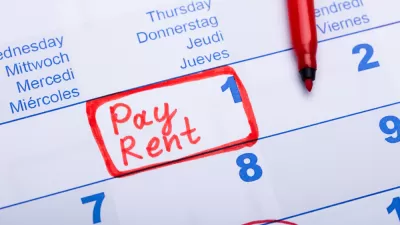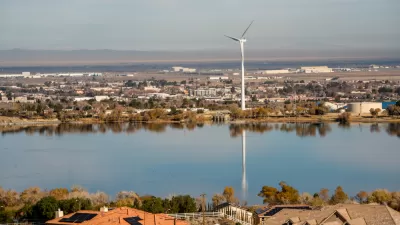The rent eats first, they say. But how do people survive when the rent also eats almost everything?

Researchers at the University of Southern California Price Center for Social Innovation recently published the results of a massive survey of Los Angeles-area renters to gather data on the effects of the region's housing affordability crisis.
The "How do Renters Cope with Unaffordability?" report was led by Jovanna Rosen, Sean Angst, Soledad De Gregorio, and Gary Painter, who spent 2019 conducting surveys in Spanish and English in the Los Angeles Promise Zone (LAPZ), Central Los Angeles, and the South Los Angeles Promise Zone (SLATE-Z).
Key findings from the report include data showing many households cutting back on basic household needs to account for rent burdens.
"A majority of households have cut back their consumption of basic needs over the past two years in order to afford rent, including food, clothing, and entertainment and family activities. Many have acquired more debt as well," according to the report.
"Over 60 percent of surveyed households reduced food consumption and approximately 45 percent reduced spending on clothing and/or entertainment and family activities. About 45 percent of households reported delaying bill payment or taking on additional debt. About one in five households reduced their health expenses, and nearly the same share reduced education expenses. Roughly one in three households reduced their transportation costs."
The full report of the survey's findings are available to read online, with significant details included about how and where these finds varied.
FULL STORY: How do Renters Cope with Unaffordability?

Planetizen Federal Action Tracker
A weekly monitor of how Trump’s orders and actions are impacting planners and planning in America.

Maui's Vacation Rental Debate Turns Ugly
Verbal attacks, misinformation campaigns and fistfights plague a high-stakes debate to convert thousands of vacation rentals into long-term housing.

San Francisco Suspends Traffic Calming Amidst Record Deaths
Citing “a challenging fiscal landscape,” the city will cease the program on the heels of 42 traffic deaths, including 24 pedestrians.

Amtrak Rolls Out New Orleans to Alabama “Mardi Gras” Train
The new service will operate morning and evening departures between Mobile and New Orleans.

The Subversive Car-Free Guide to Trump's Great American Road Trip
Car-free ways to access Chicagoland’s best tourist attractions.

San Antonio and Austin are Fusing Into one Massive Megaregion
The region spanning the two central Texas cities is growing fast, posing challenges for local infrastructure and water supplies.
Urban Design for Planners 1: Software Tools
This six-course series explores essential urban design concepts using open source software and equips planners with the tools they need to participate fully in the urban design process.
Planning for Universal Design
Learn the tools for implementing Universal Design in planning regulations.
Heyer Gruel & Associates PA
JM Goldson LLC
Custer County Colorado
City of Camden Redevelopment Agency
City of Astoria
Transportation Research & Education Center (TREC) at Portland State University
Jefferson Parish Government
Camden Redevelopment Agency
City of Claremont





























